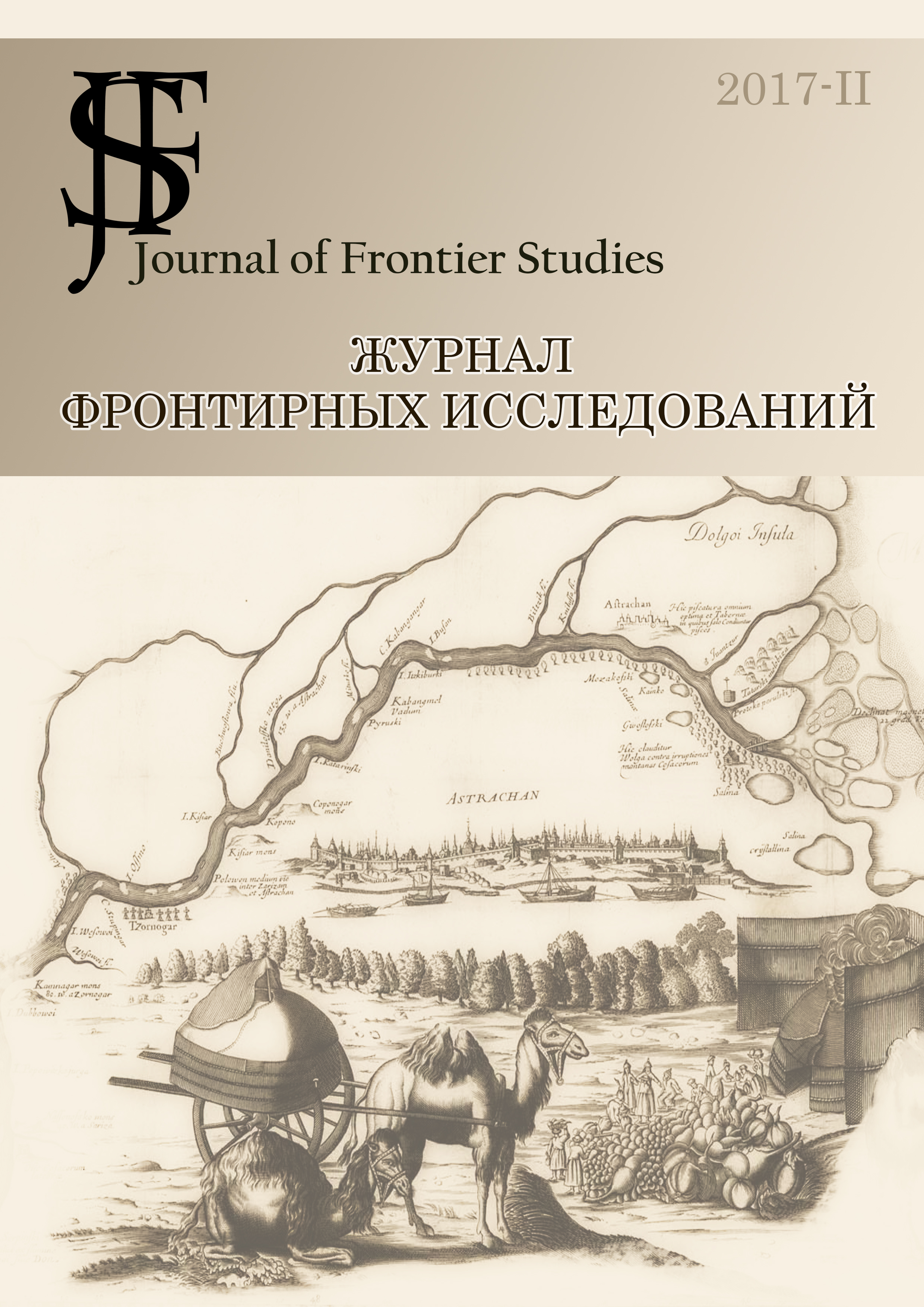Abstract
The dramatic events occurring on the American frontier radically changed the role of Native American women in a traditional society. Based on the concept of a tripartite division of the Frontier on the special stages of the Genesis of this complex phenomenon, the author shows how the position of Native woman had changed, and as she was gradually forced to change her status, to move to new roles in the Native society. Taking as an example the fate of several representatives of various Native tribes, the author shows how the traditional status of Indian woman was supplemented with new functions. First of all, these functions were connected with the military events on the frontier when the American army tried to break the resistance of Native American tribes, driving them into reservations. Indian women were forced to take up arms and to defend their people. Not an inherent function of the warrior was forced on her by the events of this period. And, in many cases, she coped well with this task.
But being a mediator by her nature, a Native woman began to function in new period as a facilitator, a diplomat and a communicator between the worlds of the White man and Native Americans. The change of status roles by the Native women was associated also with getting her a European education that gave her many new advantages and in some cases has opened new opportunities for her to be accepted by both Worlds.
The onset of the period postfrontier led to the fact that Frontier Native women fulfilled another important frontier mission – to be in a head of some civilizational processes. They were brilliant propagandists of the cultural heritage of their peoples among the white population of the United States.
References
Bataille, M., & Laurie, L. (2001). Native American Women: A Biographical Dictionary. N.Y.: Routledge.
Grinnel, G. B. (1923). The Cheyenne Indians. Their History and Ways of Life. vol.1. New Haven.
Grinnel, G. B. (1966). The Fighting Cheyennes. Norman: University of Nebraska Press.
Grinnel, G. B. (1972). The Cheyenne Indians. Their History and Ways of Life. Vol.2. Yale University Press.
Hardinge, S. (1873). Modoc Jack or the Lion of the Lava Beds. N.Y.
Houghton Donner, E. (1911). The Expedition of the Donner Party and its Tragic Fate. Chicago: A.C. McClurg.
Howard, O. O. (1907). My Life and Experiences among our Hostile Indians. Classic Textbooks.
Lewis, O. (1941). Manly–Hearted Women among the North Piegan. American Anthropologist, V. 43, N. 2, Part 1.
Linderman, F. B. (2003). Pretty–shield. Medicine Woman of the Crow. Norman: University of Nebraska Press.
Mann, B. A. (Ред.). (2006). Daughters of Mother Earth: the wisdom of Native American women. Westport: Greenwood Publishing Group.
Meacham, A. B. (1876). Wi–Ne–Ma (The Woman–Chief) and Her People. Hartford: American Publishing Co.
Murray, K. A. (1959). The Modocs and Their War. Norman, Oklahoma: University of Oklahoma Press, 1959.
Sandoz, M. (1966). Cheyenne Autumn. London: Hastings House.
Smith, S. L. (2000). Reimagining Indians. Native Americans through Anglo eyes, 1880–1940. N.Y.: Oxford University Press.
Sonneborn, L. (2007). A to Z of American Indian Women. N.Y.: Facts on File.
Stevenson, E. (2002). Figures in a Western Landscape. Men and Women of the Northern Rockies. Baltimore: Transaction Publishers.
Zanjani, S. S. (2001). Sarah Winnemucca. Lincoln: University of Nebraska Press.

This work is licensed under a Creative Commons Attribution-NonCommercial-NoDerivatives 4.0 International License.

